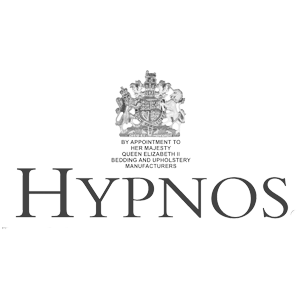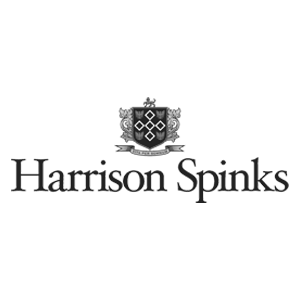There is a tool to suit every task when it comes to upholstery, whether you need something manual or electric there is a great range of options available. So, if you know you need something to get your project off the ground, but you’re not sure what, we can help! Our decades of experience supplying the furnishing and upholstery industry will ensure you can get the right tools and solutions.
Are you contemplating a serious (or simple) re-upholstery endeavour, but are not sure where to start or what lies beneath that outdated or worn cover fabric? Check out these 10 Steps, as a basic guide to a Chair Upholstery Process, including a range of tools and accessories available on our website.
Step 1 – Evaluation
Upholstery restoration is often a major time investment. How do you know whether your project is worth your time investment to re-upholster? At this stage you want to determine the potential strength (or weakness) of the underlying frame without removing the upholstery. Take note of any improvements you would like to see to these parts in your finished project, and plan accordingly.
Step 2 – Measuring
Once you have determined that your upholstered chair frame is in restorable shape, it’s time to measure. Your new fabric is the most important AND the most exciting part of your new look! When you buy your fabric, you want to be sure you have the correct amount – without too much waste. Does your chair have a cushion or a ‘tight’ seat or back?
These factors are all taken into consideration as you measure. Ensure your measurements are accurate with a Ports Tape Measure marked with imperial and metric measurements and in a handy, easy to store plastic case.

Step 3 – Fabric Selection
You’ve evaluated and confirmed the structural integrity of your project in Step 1 and measured it to determine fabric requirement in Step 2. Now you’re ready to choose your fabrics! Colour, texture, and pattern are three variables you will encounter in the realm of fabrics. Each lends a unique character to the surface, and to each other.
Step 4 – Deconstruction
Antique pieces may present you with hundreds of tiny tacks to pull. Hardwoods such as oak and maple hold staples and tacks tightly in their closed wood grain, while softer woods are more forgiving. Deconstruction can be challenging and tedious, but with the best tools this process can be made so much simpler.
Ripping Out or Stripping Down Tools
It is a matter of preference whether you prefer a straight or bent (cranked) chisel for your project. For deconstruction of upholstery we recommend the C S Osborne Ripping Chisel a cranked chisel, designed to provide a good angle for removing old upholstery and tacks. Knock the end of the handle with a wooden mallet to remove old fabric and tacks.
As well as the chisel talked about above, there are many more tools that are used to rip out or strip back old upholstery to make way for new, updated fabric and materials. The most basic of requirements for any upholsterer will be a staple remover & tack claw. Removing staples and upholstery tacks can be a tedious task, we hope this wide range of tools will make it a little easier. We have a range of Staple and Tack Lifters for every project.
The C.S. Osborne No. 1066 Spade Tack Lifter is a high quality tool with a spade shaped blade for getting under staples & tacks. Widely used in the industry this high quality tack lifter is crafted from drop forged steel & has a hardwood handle, ideal for ripping out staples as well as tack removal. Staple and tack lifters will also come in handy during the reconstruction process as you can try temporary tacking (only knocking tacks part of the way in place) until you are sure you have the correct position. Then if you need to move the tack it is easily lifted out with this type of tool.

Another firm Tacura favourite is the Berry’s Staple Remover, this comes with a blade forged from 4140 alloy tempered steel for lasting use and is fitted to a hardwood handle, that fits perfectly in your hand. The professional upholsterers well proven choice, it removes old staples in one action, even if they are embedded deeply in the wood.
Step 5 – Clean, Repair and Refinish
The extent of necessary repair work in DIY upholstery often remains unknown until the hard work of deconstruction is done – a scary prospect for some… this process includes cleaning the exposed wood and/or metal parts, tightening or replacing screws or bolts and re-gluing separated joints, for re-gluing why not try this Impact Adhesive a one-part contact adhesive ideal for numerous jobs around the home and workshop. It provides a high strength strong bond on contact without the need of special supports, jigs clamps or weights.
Step 6 – Reconstruction: Padding
Once the foundation is solid and ready to re-build on your project, you can begin to build the upholstery layers back up. Horsehair was the padding of choice in traditional upholstery and is still used by skilled upholsterers in restoration & reproduction work today. Its properties provide a firm and comfortable base which may be augmented with a layer of cotton upholstery padding to fill out the shape and soften hard edges. When you’re cutting your padding, you need a tool that can handle many layers in one go.
Every upholstery project needs a pair of hard-working shears! We have a wide range of scissors that are suitable for endless project needs. The KAI 5230 - 9" bent handle scissor has an ergonomically soft handle which allows for fatigue-free cutting on all types of fabric. Easily cut multiple layers of heavy fabric with ease, while also trimming lighter cottons without fabric slippage. These scissors also feature a tailoring bend for obstruction free, stand-up pattern cutting and for trimming padding and batting. The bent handle keeps the edge of the padding flat on the table for accurate trimming.
If your cutting needs are more industrial why not try an electronic Cutting Machine, there is a precision offered by fabric cutting machines that are not offered by other means of cutting. Electric scissors and cutting machines for fabrics are essential equipment for the upholstery and furnishing industries. Electric fabric cutting machines assist with the fast cutting of a wide range of fabrics, such as cotton, wool, silk, chemical fibres, leather, and many other fabrics. We stock a wide range of professional cutting tools and accessories to ensure your job is conducted with the greatest ease, including the KM-KRA-5" Cutting machine circular knife cutting machine with automatic sharpener, or the Bosch Pneumatic Foam Cutter which will cut foam and padding with ease, both available to order with us today.
Step 7 – Fabric Layout & Cutting
Now your project is clean, newly padded, and ready for the final fabric layer – the dressing, the final transformation, the ‘piece de resistance’! Cutting the new fabric is often the scariest step, remember to ‘measure twice and cut once’ you need a set of scissors you can trust. Try the ELK Stay-Set Tailoring Shears, these fully forged, heavy-duty tailors’ shears with pointed blades are made of carbon steel finished with a nickel plating and black enamelled handles. The Stay-Set pivot system enables ease of use for this heavy-duty shear. A firm favourite with our apparel and upholstery customers.

Depending on the complexity of your project, you may want to use the original fabric pieces for patterning – tracing around them onto the new fabric with marking wax or chalk. We stock marking tools from the best suppliers in the market, including the Hancock’s Garment Marking Chalks available in 6 colours, in boxes of 50 (also available in a wax variety). These Chalks are also known as “Tailors’ Crayons” and are suitable for marking virtually all textiles unless of a delicate nature and are removed from the material by light brushing.
In general, your new fabric pieces will be 4-6 inches larger than the dimensions of the original pieces in each direction to allow ‘tugging room’ for stapling. When in doubt about the fit of a difficult section, make a pattern out of a piece of Economy Pattern card or Spotmark Paper before cutting into your final upholstery fabric, good quality pattern card and paper offer excellent durability for most pattern making projects.
Step 8 & 9 – Reconstruction
When applying the new cover fabric to your upholstery project, you should begin with the inside, or the surfaces you are regularly in contact with. The majority of the fabric attachment process will involve stapling the fabric to the frame or wood elements. Take the hard work out of stapling with an electronic stapler, such as the Fasco 71 Series Pneumatic Stapler It’s very simple to use, and even simpler to repair and maintain. A great tool for general upholstery.

After your fabric is securely stapled to finish the inside surfaces of your project, it’s time to work on the outside fabric panels. Keep your material in place with C.S. Osborne No. 190 Upholstery Skewers Nickel Plated steel upholstery skewers, also known as ‘upholsterers pins’ or ‘Lay Pins’. Used for holding upholstery fabric in place ready for cutting, stapling, or stitching. The final finishing touch is attachment of the black bottom cloth or ‘dust cloth’ which is stapled to the underside of your project.

Finishing may also involve application of decorative tacks and trim, but have you ever wondered how decorative tacks and ornate pins are fixed in place without any visible surface damage? The C S Osborne 36 Bronze Magnetic Hammer with Nylon Tip could well be the answer! Used extensively in the professional upholstery trade, the nylon tip enables the user to strike decorative headed nails without causing too much damage during construction.
Step 10 – Celebrate!
And, there you have it, a very simple guide to an upholstery process with a list of kit you may need in your toolbox, all available to order with us today… Voila!
If you would like to see an amazing re-upholstery project that was exquisitely completed by one of our customers, with the help of a number of Tacura tools - click here











